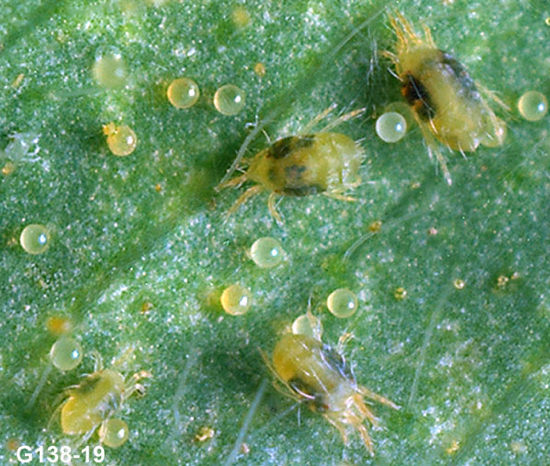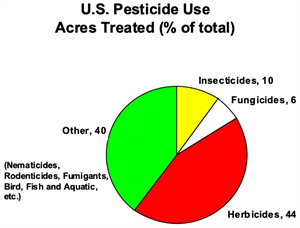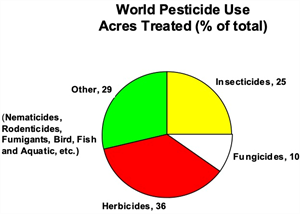-
Apr 3, 2024Managing Spider Mites on Spring Melons
As the spring weather finally warms up, PCAs need to be on the lookout for spider mites on melons. Among mite species commonly found in the desert, twospotted spider mites, Tetranychus spp., are the most widespread and economically important. In the desert, my experience has been that mite outbreaks are more common on watermelons than other netted and mixed melon varieties. However, problems can certainly occur on all melon types. For instance, last spring there were a few situations of mites colonizing cantaloupes in mid-April. Timely control prevented losses to the crops. Under ideal conditions, spider mite populations can increase dramatically, and the hot, dry weather forecast for the next few weeks can be favorable for rapid population growth. For example, mites can develop from egg to adult in about 37 days when temperatures average about 60° F, but at average temperature around 86° F, it only requires 7 or 8 days to complete their lifecycle. If left unchecked, mite populations are capable of rapidly increasing to damaging levels. Several natural enemies (including predatory mites and thrips, minute pirate bugs and lacewings) play an important role in regulating mite populations below economically damaging levels. Predators can maintain mite populations in check by feeding on slowly developing mite populations. However, when temperatures become hot and dry, the mites can quickly outrun the predator population, particularly following broad spectrum insecticide usage. Whenever possible, it is best to use selective insecticides (e.g., IGRs) when spraying for cabbage loopers and whiteflies to avoid elimination of natural enemies. Reducing stress on melon plants with good irrigation and fertilization management can enhance plant tolerance to mites. Well defined economic thresholds have not been established for spider mites in the low desert, so treatment with an acaricide is recommended when significant webbing can be found on leaves and predatory mites and thrips are absent. Several effective miticides are available for melons including Agri-Mek (and abamectin generics), Oberon, Acramite, Miteus, Zeal, and sulfur among others. Although spider mites inhabit the undersurface of leaves, most of the new miticides are translaminar and can effectively reach the pests when properly applied to upper leaf surfaces. If leafminers are present in the field, a product containing abamectin (e.g., Agri-Mek) is a good option. If whitefly nymphs are beginning to build on older leaves, Oberon or Minecto Pro may be an effective option. Also, be aware of honeybees and other pollinators in or around melon fields. If bees are present, be sure to carefully read labels and determine bee safety of a product before making an application in a melon field. We also recommend that insecticides only be applied at night (e.g. 10:00 pm – 3: 00 am). when honeybees are not actively working in the field.
For more information on mites and their management please visit the attached pdf: Spider Mites on Melons.
To contact John Palumbo go to: jpalumbo@ag.Arizona.edu
















